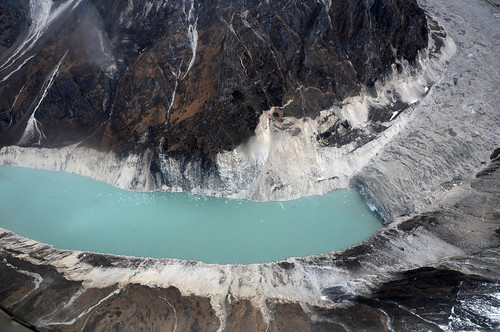根據亞洲開發銀行(Asian Development Bank,ADB)的報告,如果全球持續依賴石化燃料,到了本世紀末,氣候變遷將削減南亞經濟每年9個百分點;若考量洪災、旱災和其他極端氣候的效應,氣候變遷對人類社會和財務金融影響更鉅。
亞洲開發銀行看氣候變遷:經濟損失可達24%
ADB於19日發表《南亞氣候變遷與適應之成本評估》報告,預測到了2050年,南亞六國整體年度GDP將減少平均1.8%,2100年減少達8.8%。
南亞六國分別是孟加拉、不丹、印度、馬爾地夫、尼泊爾和斯里蘭卡。馬爾地夫和尼泊爾將受創最嚴重,2100年經濟損失分別達每年12.6%和9.8%。孟加拉將損失9.4%、印度8.7%、不丹6.6%、斯里蘭卡6.5%。
ADB說,如果全球氣候變遷趨勢不變,南亞將需要花費至少730億元,或是現在起到2100年平均每年0.86%的GDP去適應氣候變遷帶來的損失。
報告假設全球溫度將上升4.6℃,但銀行說,由於氣候變遷的不確定性,2100年經濟損失達24%也不無可能。
整體效應負面 南亞全部難倖免
溫度上升,南亞全區都難以倖免。雖然部分地區農業可能因氣候變暖而得利,整體的農業效應仍是負面的。
2080年尼泊爾山區年度稻米產量可增加16%,但是孟加拉、不丹、印度和斯里蘭卡會減少23%。海平面將上升1公尺,淹沒海岸線,影響9千5百萬居民。若是暴風雨來襲,受影響人數將再增加1億。
降水改變將影響能源和水源供給。到了2050年,印度水資源短缺將達到4千億立方公尺,進而導致登革熱和腹瀉病例的增加。
「南亞經濟正面臨嚴重威脅,數百萬居住在南亞諸多山區、三角洲和環礁的居民,其人身安全和生計岌岌可危。」ADB知識管理和永續管理副總裁說,「南亞各國必須獨立與協力對抗海平面上升、水資源、糧食、能源被破壞以及疾病增加等問題。」
承受損失多寡 端看如何因應
相反的,如果世界各國合作達成哥本哈根協議內容,讓溫度上升低於2℃,南亞經濟損失到2050年可減少到1.3%,到了2100年也可控制在2.5%。南亞因應氣候變遷損失的成本也會減少至406億,或0.48%GDP。
報告指出,氣候變遷對南亞造成的衝擊和損失,將視全球如何解決氣候變遷問題而定。
Climate change will slash up to nine percent off the South Asian economy every year by the end of this century if the world continues on its current fossil-fuel intensive path, the Asian Development Bank warns in a new report.
The human and financial toll could be even higher if the damage from floods, droughts, and other extreme weather events is included, the bank says.
“South Asia’s economy is under serious threat and the lives and livelihoods of millions of South Asians inhabiting the region’s many mountains, deltas, and atolls are on a knife edge,” said Bindu Lohani, ADB vice-president for knowledge management and sustainable development.
“Countries must respond individually and collectively to cope with rising sea levels, disrupted water, food, and energy supply and increased disease,” he urged.
Released Tuesday, the report “Assessing the Costs of Climate Change and Adaptation in South Asia,” predicts that by 2050, the collective economy of six South Asian countries will lose an average 1.8 percent of its annual gross domestic product, rising to 8.8 percent by 2100.
The six countries are: Bangladesh, Bhutan, India, the Maldives, Nepal, and Sri Lanka.
The forecast assumes a 4.6°C rise in global temperatures, but the bank says that given the uncertainties of climate change, there is a slight chance that annual losses could hit 24 percent by 2100.
The Maldives and Nepal would be the hardest hit, losing up to 12.6 percent and 9.9 percent of their economies, respectively, every year, by 2100. Meanwhile, Bangladesh would lose 9.4 percent, India 8.7 percent, Bhutan 6.6 percent, and Sri Lanka 6.5 percent.
The impact and cost of climate change in South Asia will depend on how the global community tackles the issue, according to the report.
If the world continues on its current path, South Asia will need to spend at least $73 billion, or an average of 0.86 percent of its GDP every year between now and 2100 to adapt to climate change damage.
On the other hand, if countries around the world act together to keep the rise in global temperatures below 2°C under the so-called Copenhagen-Cancun agreement, then South Asia’s economy would only be reduced by 1.3 percent annually by 2050 and 2.5 percent by 2100, the bank says.
The cost of shielding South Asia’s economy from the worst of the impacts would be nearly halved to around $40.6 billion, or 0.48 percent of GDP.
Almost all areas of South Asia will suffer as temperatures rise. While farmers in some parts of the region may benefit from warmer weather, overall the impact on agriculture will be negative.
Annual rice production could increase by as much as 16 percent in Nepal’s hills and mountains by 2080, but drop as much as 23 percent in Bangladesh, Bhutan, India, and Sri Lanka by that time.
A one-meter (39 inch) rise in sea levels, inundating coastlines, would affect 95 million people and would endanger another 100 million people when there are storm surges.
Changes in precipitation will make it harder to meet energy and water needs, with India’s water shortfall forecast to hit 400 billion cubic meters by the 2050s. These changes will also bring an increase in cases of dengue and diarrhea.
※ 全文及圖片詳見:ENS








